Gardeners St Pancras: Expert Gardening Services in the Heart of London
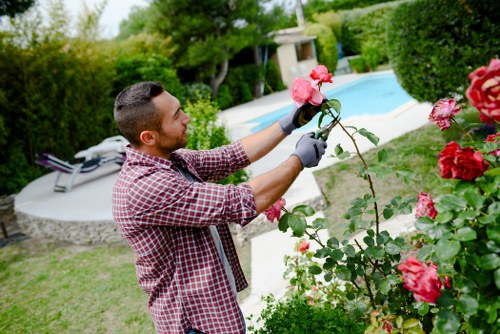
Maintaining a beautiful garden in the bustling area of St Pancras can be a challenging yet rewarding endeavor. Whether you have a small balcony garden or a spacious terrace, having professional gardeners can make all the difference.
Gardeners in St Pancras offer a range of services tailored to meet the unique needs of urban gardens. From planting and pruning to lawn care and garden design, these experts ensure your green space thrives amidst the city's hustle and bustle.
Choosing the right gardening service is crucial for the health and aesthetics of your garden. With numerous options available in St Pancras, it's essential to understand what sets professional gardeners apart.
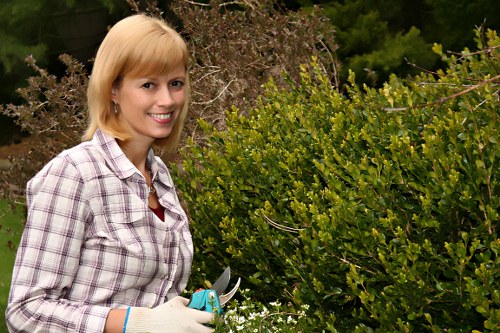
Services Offered by Gardeners St Pancras
Professional gardeners in St Pancras provide a comprehensive suite of services designed to cater to all aspects of garden maintenance and enhancement.
Planting and Pruning: Expert gardeners ensure your plants are correctly planted and maintained through regular pruning, promoting healthy growth and vibrant blooms.
Lawn Care: From mowing and edging to fertilizing and aeration, lawn care services keep your grass lush and green all year round.
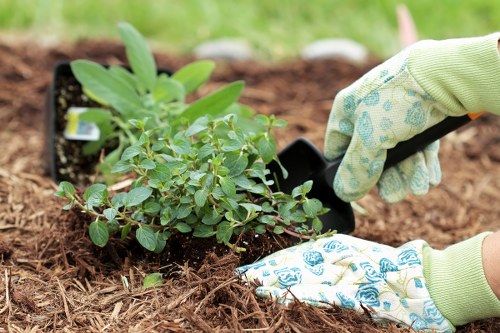
Garden Design and Landscaping
Transform your outdoor space with professional garden design and landscaping services. Gardeners St Pancras work with you to create aesthetically pleasing and functional garden layouts.
Customized Solutions: Every garden is unique, and so are the solutions provided. Whether you prefer a minimalist design or a lush, tropical paradise, the gardeners tailor their services to match your vision.
Seasonal Planting: Incorporate seasonal plants to ensure your garden remains vibrant throughout the year. Gardeners advise on the best plants for each season, enhancing your garden’s beauty and resilience.
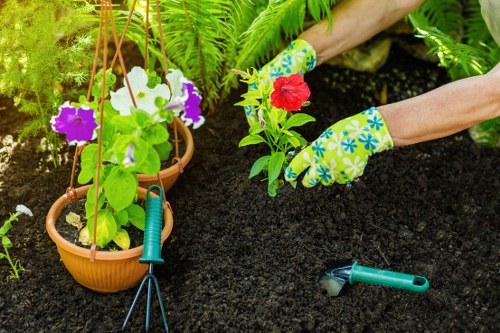
Why Choose Local Gardeners in St Pancras
Opting for local gardeners in St Pancras comes with numerous benefits. Their familiarity with the local climate, soil conditions, and plant varieties ensures your garden receives the best care possible.
Local gardeners are also more accessible, providing timely services and being readily available for consultations and maintenance.
Supporting local businesses fosters a sense of community and contributes to the local economy, making it a win-win for both the gardener and the client.
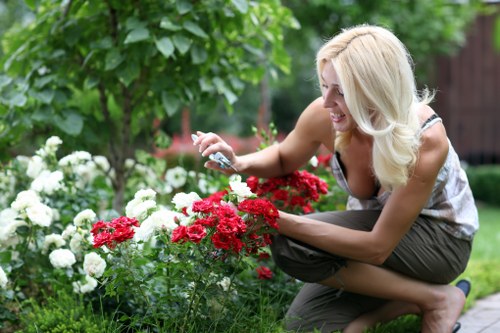
Eco-Friendly Gardening Practices
Many gardeners in St Pancras are committed to sustainable and eco-friendly practices. From using organic fertilizers to implementing water-saving irrigation systems, these professionals prioritize the environment.
Incorporating native plants reduces the need for excessive watering and maintenance, promoting biodiversity and a healthier ecosystem.
Eco-friendly gardening not only benefits the planet but also creates a healthier and more vibrant garden space for you to enjoy.
Areas Surrounding St Pancras Benefiting from Gardening Services
St Pancras is surrounded by several vibrant neighborhoods, each with its unique charm and gardening needs. Professional gardeners extend their services to these areas, ensuring a green thumb across the region.
- Camden: Known for its eclectic markets and greenery, Camden residents often seek creative garden solutions.
- Kensington: With its grand residences, Kensington gardens require meticulous maintenance and elegant designs.
- Chelsea: Chelsea’s stylish homes benefit from contemporary gardening trends and sustainable practices.
- Islington: The blend of urban and suburban settings in Islington calls for versatile gardening services.
- King's Cross: Rapidly developing, King’s Cross gardens need modern landscaping and efficient maintenance.
- Bloomsbury: Educational and cultural hubs like Bloomsbury favor well-maintained public and private gardens.
- Fitzrovia: Artistic communities in Fitzrovia appreciate innovative and unique garden designs.
- Marylebone: Marylebone’s elegant streetscapes require sophisticated gardening touch.
- Maida Vale: The picturesque canals of Maida Vale offer unique gardening challenges and opportunities.
- Holborn: Central Holborn combines business and leisure, necessitating versatile garden spaces.
- Somers Town: Close-knit community gardens in Somers Town thrive with professional care.
- Regent’s Park: Large green spaces in Regent’s Park benefit from expert landscaping and maintenance.
- Somerset House: Historic gardens near Somerset House require specialized gardening expertise.
- Granary Square: Modern developments in Granary Square integrate contemporary gardening solutions.
- Farringdon: Historic and modern blends in Farringdon gardens need diverse gardening approaches.
Tips for Maintaining Your Garden in St Pancras
Maintaining a garden in an urban setting like St Pancras involves specific strategies to ensure longevity and beauty.
Regular Watering: Ensure your plants receive adequate water, especially during the hot summer months. Using a watering schedule can help maintain consistency.
Proper Soil Maintenance: Healthy soil is the foundation of a thriving garden. Regularly amend your soil with compost and organic matter to enhance its fertility and structure.
Pest and Disease Management
Protect your garden from common pests and diseases by implementing integrated pest management practices. This involves using natural predators, organic treatments, and regular monitoring.
Early detection is key. Regularly inspect your plants for signs of stress or infestation to address issues promptly before they escalate.
Maintaining plant diversity can also help prevent the spread of diseases and create a balanced ecosystem in your garden.
Choosing the Right Plants for Your St Pancras Garden
Selecting the appropriate plants is vital for the success of your garden. Consider factors like light exposure, soil type, and climate when choosing plant species.
- Perennials: These plants come back year after year, providing lasting beauty with minimal maintenance.
- Annuals: Annual flowers offer vibrant colors and can be changed seasonally to keep your garden fresh.
- Herbs: Growing herbs like basil, mint, and rosemary adds functionality and fragrance to your garden.
- Native Plants: Incorporating native species supports local wildlife and reduces the need for excessive watering.
- Succulents: Ideal for low-maintenance gardens, succulents require minimal water and care.
Creating a Sustainable Garden
Sustainability in gardening involves practices that preserve resources and promote ecological balance. Implementing composting, rainwater harvesting, and using eco-friendly materials are excellent ways to create a sustainable garden.
Planting trees and shrubs not only enhances the beauty of your garden but also provides shade, reduces carbon footprint, and supports local wildlife.
Choosing energy-efficient lighting and recycled materials for garden structures contributes to an environmentally friendly garden space.
Enhancing Your Garden’s Aesthetics
Aesthetics play a significant role in the appeal of your garden. Incorporate elements like garden furniture, pathways, and decorative features to create a harmonious and inviting space.
- Pathways: Creating defined pathways guides visitors through your garden and adds structure.
- Garden Furniture: Comfortable seating areas encourage relaxation and enjoyment of your outdoor space.
- Water Features: Adding ponds, fountains, or birdbaths introduces soothing sounds and attracts wildlife.
- Lighting: Strategic lighting highlights key features and extends the usability of your garden into the evening hours.
- Decorative Elements: Sculptures, planters, and other decorative items personalize your garden and reflect your style.
Seasonal Garden Maintenance
Each season brings unique challenges and opportunities for your garden. Adapting your maintenance routine ensures your garden remains healthy and vibrant throughout the year.
Spring: Focus on planting new flowers, fertilizing the soil, and preparing garden beds for the growing season.
Summer: Prioritize watering, weeding, and protecting plants from excessive heat and pests.
Autumn: Clean up fallen leaves, plant bulbs for next year, and prepare your garden for the colder months.
Winter: Protect sensitive plants, plan for the upcoming year, and maintain garden tools and equipment.
Conclusion
Gardeners St Pancras provide invaluable services that transform urban spaces into lush, vibrant gardens. Their expertise in garden design, maintenance, and sustainable practices ensures your garden not only looks stunning but also thrives in the heart of London.
Whether you’re a seasoned gardener or a beginner, hiring professional gardeners can elevate your gardening experience, making it more enjoyable and less time-consuming.
Embrace the beauty of gardening in St Pancras with the help of dedicated professionals who understand the unique challenges and opportunities of urban gardening.
Frequently Asked Questions
1. What services do Gardeners St Pancras offer?
Gardeners in St Pancras provide a wide range of services, including planting, pruning, lawn care, garden design, landscaping, and eco-friendly gardening practices tailored to urban gardens.
2. How can I choose the right plants for my garden in St Pancras?
Select plants based on your garden’s light exposure, soil type, and local climate. Consulting with professional gardeners can help you make informed decisions that ensure your plants thrive.
3. Are Gardeners St Pancras available for emergency garden maintenance?
Many professional gardeners offer emergency maintenance services to address unexpected issues like storm damage, pest infestations, or sudden plant diseases. It’s best to inquire directly with the service provider.
4. What are the benefits of hiring local gardeners in St Pancras?
Local gardeners are familiar with the area’s climate and soil conditions, ensuring more effective gardening solutions. They are also readily available for timely services and contribute to the local economy.
5. How can I make my garden more sustainable?
Implement sustainable practices such as composting, rainwater harvesting, using native plants, and choosing eco-friendly materials. Professional gardeners can provide guidance and help you integrate these practices into your garden.